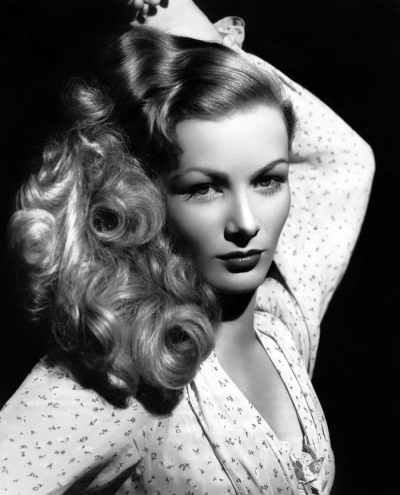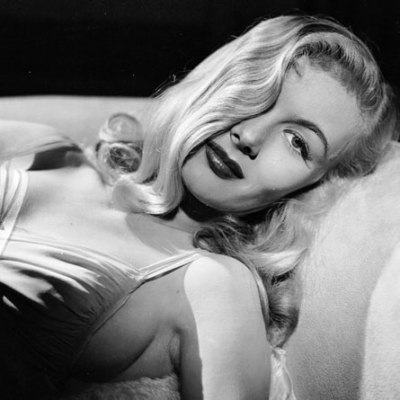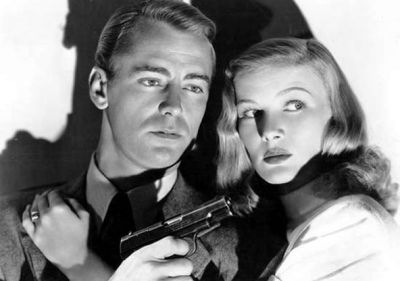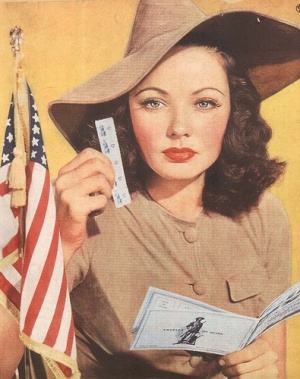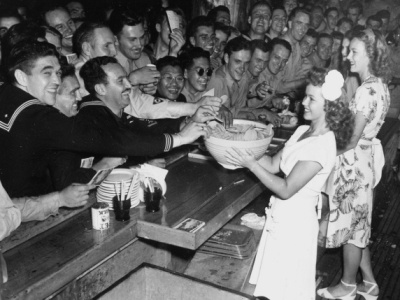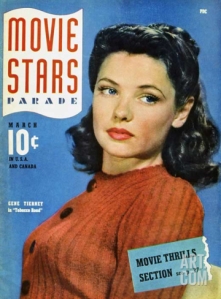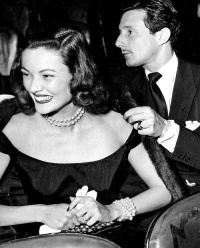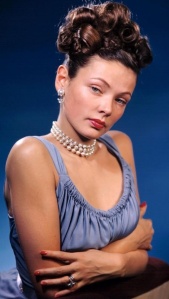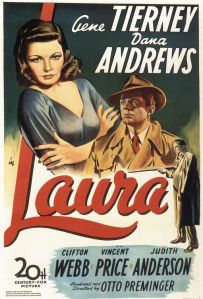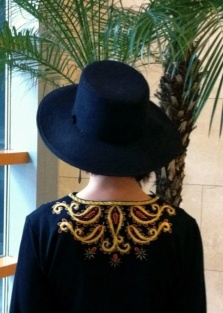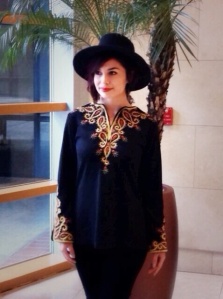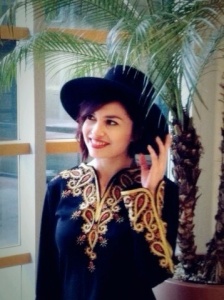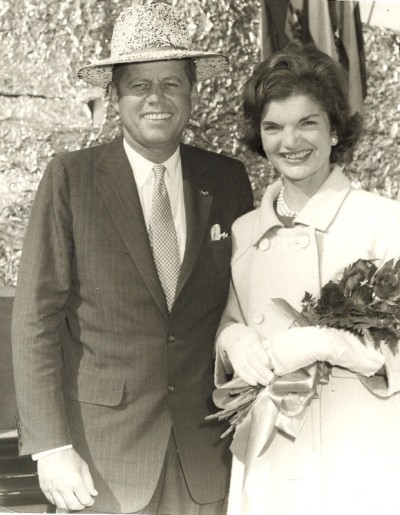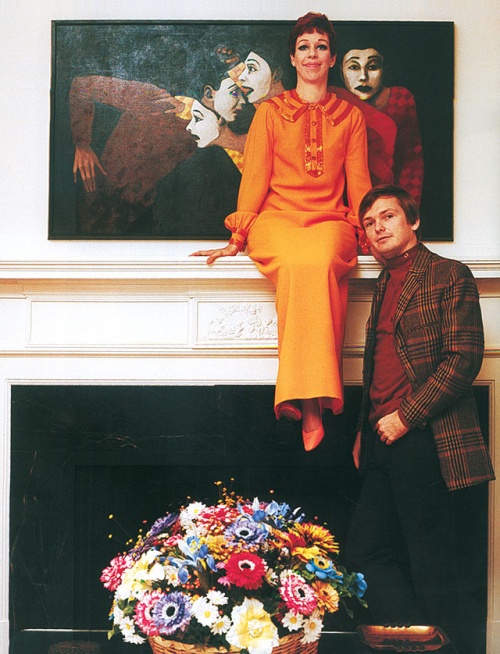Hopes ran high for Princess Margaret of Great Britain‘s October 1979 fundraising tour in America. The cause was the London‘s Royal Opera House at Covent Garden, a centerpiece of world opera and ballet. By 1979, backstage conditions at the 120-year-old building had become “rather grotty” said the Princess’ 30-year-old nephew, Prince Charles, and terribly cramped. Money was needed to construct an extension to contain rehearsal studios for both the Royal Opera chorus and the Royal Ballet dancers, modern dressing rooms, and improved wardrobe maintenance and storage areas. In her role as President of the Royal Ballet, Margaret was tapped to harness her star power among American “art cats” to rustle up another £4,000 to add to the £12,000 already raised by the Royal Opera House Development Appeal in the previous four years. In response, the American Friends of Covent Garden had sold advance tickets for one formal dinner at each of five stops in Chicago, Houston, Los Angeles, San Francisco, and Cleveland where Princess Margaret would be the guest of honor. The film, “Prince Charles Backstage at Covent Garden,” would be shown to highlight the downtrodden state of affairs at the Opera House.
Princess Margaret is to be in the Venetian Room at the Fairmont [Hotel] on Monday, October 22 for a dinner dance. $500 tickets. For tickets, write Mrs. Gordon Getty [Ann]. (1)
As Princess Margaret (1926-2002) was not traveling as a representative of her government, the trip was semi-private and somewhat relaxed. There would be both times of pleasure and of duty. Margaret would attend the Lyric Opera of Chicago where Leontyne Price and Luciano Pavarotti would perform. In Houston, she would visit the NASA space center, have a luncheon with former First Lady Lady Bird Johnson, and witness open heart surgery at St. Luke’s Hospital. In Los Angeles, she would unveil a plaque at a new Rolls Royce Facility. She would travel outside Cleveland to a horse farm. Social doyennes jockeyed for the opportunity to throw the Princess a cocktail party, dinner, or luncheon. She would mingle with Hollywood stars. The charity, Les Dames de Champagne, in Los Angeles scored a coup when the Princess’ social secretary squeezed their charity event into Margaret’s busy schedule:
On the evening of Saturday, October 20, Les Dames will play hostesses to H.R.H. Princess Margaret who’ll attend their reception upstairs at Bullocks Wilshire Los Angeles and promenade her royal presence past some interesting “international tasting tables”…It had originally been scheduled for Sunday, October 21 but when Les Dames founder Wanda Henderson read about the Princess’ visit to L.A., she got on the phone to the British consul general’s office and the wheels began to spin…[H]alf of the money raised will go to the Princess’ cause. (2)
Yet not everyone in America was as excited about Her Royal Highness’s impending visit. One reader of the L.A. Times wrote to the paper’s editor:
I resent Princess Margaret invading our country to beg money for refurbishing and expanding…[the] Royal Opera House….Princess Margaret inherited a fortune in jewels from her grandmother, the late Queen Mary. I wonder why she and her sister, Queen Elizabeth, don’t sell some of their jewels to restore some of their famous landmarks. (3)
American gossip columnists got a lot of mileage covering Princess Margaret’s love life:
Reader: I have been fascinated with that romance between Princess Margaret and her young boyfriend Roddy Llewellyn. Is that still going on?”(M.A., Greenwood, Louisiana.)
Columnist: I wouldn’t call it a romance. The royalty grapevine insists that Roddy is amusing and keeps the Princess diverted. They still are companionable and had been vacationing at a secluded villa on Spain’s Costa del Sol. (4)
Yet American gossip columnists enjoyed trashing Margaret in print, gleefully reporting the breakdown of her unhappy marriage with her former husband, the internationally-acclaimed photographer Anthony Armstrong-Jones (Lord Snowdon) and their bitter July 1978 divorce.
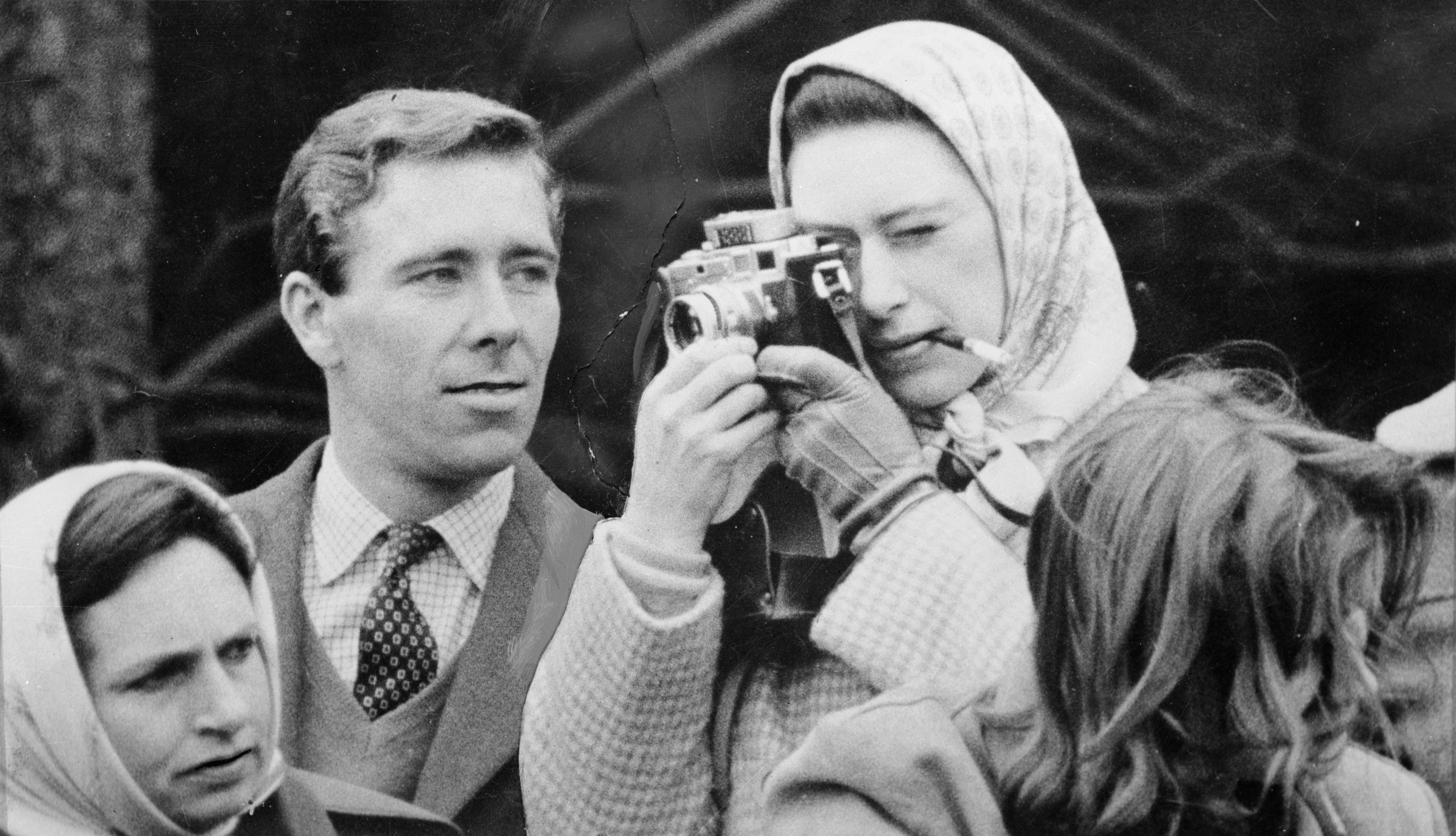
At left, Tony Armstrong-Jones (Lord Snowdon) watches as his fiancee at the time, Princess Margaret, takes a photograph at the Badminton Horse Trials. ca. 1960
Gossip columnists were keen to report Margaret’s fashion sense in their articles, often inserting subtly-catty remarks.
On a gray day, she wore…white platform sandals that showed the heel reinforcements in her hose….Before she plunged in to shake hands with everyone there, she extracted a cigarette holder and a cigarette case from her white ostrich-patterned bag. The Princess is adept at clenching the cigarette holder between her teeth as she lights up…. (5)
Her Royal Highness Princess Margaret, The Countess of Snowdon, the maverick in Britain’s royal family, will be back in L.A. Wednesday evening….[S]he is petite and inclined to plumpness….[with] startling blue eyes and a lovely British complexion. (6)
The timing of Margaret’s October arrival in America should have been favorable to her fund drive. The Royal Ballet that had just wound up its exceedingly successful North American summer tour on August 5 in Mexico City. For six days in late July, the company had performed in the Los Angeles Shrine Auditorium, their repertoire including the ever-popular Shakespeare tragedy, “Romeo & Juliet.” The premiere had been at 8:30 p.m. on July 24, 1979. L.A. Times gossip columnist Jody Jacobs reviewed the premiere two days later with this headline: “Warm Hello for Royal Ballet.”

English dancer Marguerite Porter became Senior Principal Ballerina at The Royal Ballet in 1978.
Jody Jacobs was not kidding about warmth! This was the first big event in which President Carter‘s strict temperature controls had been put in effect. Temperatures had soared into the 80s that day in L.A. with hazy sunshine predominating. The air conditioning thermostat in the Shrine had been set at the federally-mandatory 78 degrees. The Shrine, which had been “magically staged as an English Maytime tent,” became, in that summery, smoggy heat, a “giant communal steam bath.” The ballet fans were packed into their seats, wearing their best clothes, sweating profusely, mopping brows, dabbing at armpits. Middle-aged women suffered menopausal hot flashes and fanned themselves with the evening’s program. Nevertheless, aside from a few good-natured grumbles, the soggy but devoted ballet patrons and the dancers, in the spirit of the English, remembered to
Keep Calm and Carry On
Ironically, an article on menopausal health appeared in the L.A. Times alongside Jacobs’ review, with the headline,
Estrogen Useful
Later that week, Governor Jerry Brown of California would fill out the necessary paperwork to challenge President Carter in the 1980 Democratic primary. (President Carter would keep the Democratic nomination but he would not go on to win a second term.)
On August 21, 1979, just seven weeks before she disembarked for America, Princess Margaret celebrated her 49th birthday with her children, David, 17, and Sarah, 15, at Balmoral Castle, the Scottish holiday home of the British royal family. Margaret’s sister, Queen Elizabeth II, was there, as was her husband, Prince Philip, the Duke of Edinburgh. In her role as head of the British Commonwealth, the Queen had just returned from tense negotiations in Lusaka, Zambia, to discuss the Rhodesian conflict, where there was tremendous anti-British feeling.

Queen Elizabeth II on a state visit to Botswana, summer 1979. See Prince Philip on our left and Prince Andrew on our right. SERGE LEMOINEGETTY IMAGES
Guerrilla forces were operating out of bases in Zambia and the Queen had put herself at great risk. The Queen arrived two days ahead of Prime Minister Margaret Thatcher, the first female prime minister of England. As was her custom, the Queen hosted a banquet and reception for all forty-two African leaders. Behind the scenes, she held private talks, bringing down the temperature so significantly in the negotiations that Thatcher called for a constitutional convention in London in September to pave the way for Rhodesian independence.
In a little over a month, Princess Margaret and six others would hop on a British Airways Concorde jet and fly from London to the U.S. to begin her fundraising swing through the States. The Princess’ lady-in-waiting, Lady Annabel Whitehead, had been steadily packing the Princess’ jewels, purses, shoes, and outfits in the 27 trunks that she would need for such a variety of appearances. Everything was falling in place and the Princess was looking forward to some good press.
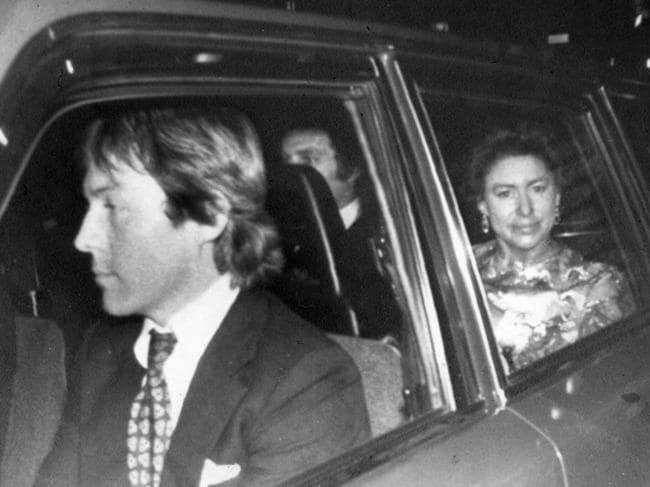
Roddy Llewellyn and Princess Margaret not long after they met in 1973. Picture: SuppliedSource: News Corp Australia
Margaret had significant image problems at home. A recent poll had put her dead-last in royal family popularity, even below her niece, Princess Anne. The public disapproved of her romance with Roddy Llewellyn, an aspiring pop singer and gardener seventeen years her junior, who, just a month before Margaret turned 49, in July, had had his drivers’ license revoked for 18 months. The previous February, he had been arrested for drunk driving after he crashed his Ford van into an unmarked police car in Kensington High Street, London. Roddy had sped away and the police had given chase. Roddy’s car had skidded to a halt when it ran into a cement median in Highbridge. Roddy was fined a measly £12.25 but not being able to drive was proving to be hard on his gardening business as he needed it to haul soil, pots, and plants to landscaping sites. For months, Roddy’s drink-driving incident had been splashed across newspapers internationally. Even worse, the passenger in Roddy’s car that fateful night was a married woman whose husband later filed for divorce naming Roddy as his wife’s seducer.
Also that same July, Lord Snowdon (“Tony”) and his new wife, Lucy Lindsay Hogg, gave birth to a baby girl, garnering sweet headlines. Even worse, the baby would be christened just days before Margaret was landing in America. There would be photographs of Tony, Lucy, and the baby, Lady Frances at the ceremony, where Tony and Margaret’s daughter, Lady Sarah Armstrong, was to be named as the baby’s godmother.

Lord Snowdon and his second wife Lucy Lindsay Hogg shown shortly after their December 1978 marriage. She is expecting a baby.
Then, in November, when Margaret had left America, Tony would arrive in America on a book tour.
Both Margaret and Tony craved constant attention and competed for center stage. Now Tony-Cheating Tony-was getting nothing but glowing press.
A London writer was calling for Margaret’s exile to America where, the writer said, the people had the bad taste needed to appreciate her.
Princess Margaret needed to get out of England. She needed an image makeover. Photos of her relaxing at her private home on the island of Mustique in the Caribbean were making their way into the tabloids.

Princess Margaret, center. Colin Tennant in white hat, to the left. Anne Tennant, short blond hair, to the right. Roddy Llewellyn stands behind Anne. On the island of Mustique where the Princess had a home, the land of which was a gift from the Tennants.
As President of the Royal Ballet, Margaret would be mingling with the rich and well-connected Americans; their cachet would build up her profile. Perhaps association with cultured ballet and opera folk could erase some of the damage done to her reputation by those photos that had appeared in The Daily Mail the previous fall. She had been at the Glen, the Scottish home of Anne and Colin Tennant, at a private costume party with Bianca Jagger and Roddy. Wearing a slinky black dress and blonde wig, she had channeled American sex goddess Mae West, crooning seductively, “Come Up and See Me Some Time.” Anne, the hostess at the Glen, was one of the Princess’ ladies-in-waiting. She snapped some pictures of the fun time. Unfortunately, Anne’s oldest son, Charlie, had a serious heroin addiction and wanted money to buy drugs. He found the photos that his mother had tucked away in her drawer and stole them. Through an intermediary, they were sold to the press.

Pictured l. to r., Roddy Llewellyn, Princess Margaret, Anne Tennant, Charlie Tennant. on Mustique ca. 1979
Margaret longed to return to America, and, in particular, to Hollywood (“Tinsel Town”) where she was popular and the movie star men were so good-looking. Writer Gore Vidal, a lifelong close ally of the Princess, said of her love for Hollywood,
Like many British royals, she was fascinated by the place.
Read the next installment: Princess Margaret’s Trip to America, 1979, Part Two: Lord Louis Mountbatten
Readers: For more on this blog about Princess Margaret, click here.
Readers: “The Queen Mother and the Rogue Kiss” tells of the 1977 visit by President Jimmy Carter to meet the Queen and family.
Readers: For more on the British Royal Family, click here.
Sources:
- San Francisco Examiner, October 4, 1979
- Jody Jacobs’ column, L.A. Times, Sept. 21, 1979
- Virginia Cohen, Santa Monica. LA Times, Letters to the Editor, September 22, 1979
- Robin Adams Sloan’s column, The Indianapolis News, September 14, 1979
- L. A. Times, October 22, 1979, “Party Notes,” IV, page 6
- L.A. Times, Oct. 16, 1979


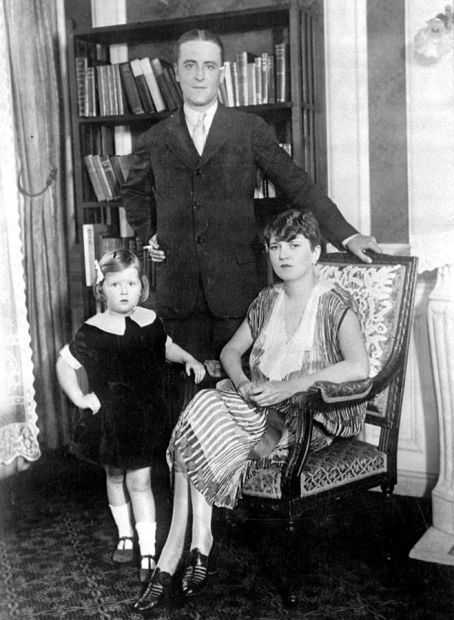
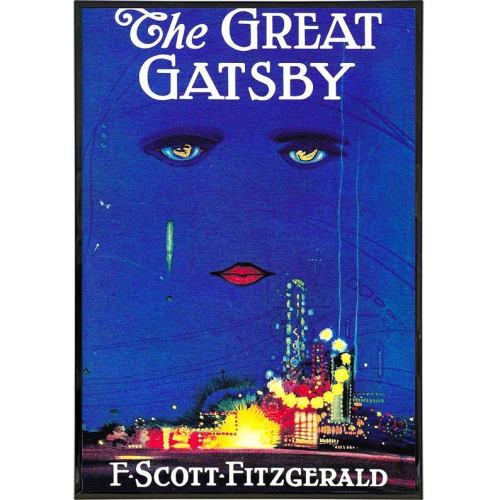 While Zelda (1900-1948) was still hospitalized, Sara Mayfield, Zelda’s childhood friend from Montgomery, Alabama, ran into Scott in Paris. She was having drinks with the son of the Spanish ambassador to the United States and Michael Arlen, whose novel, The Green Hat, was creating a sensation abroad. Scott joined them at their table. At first, the conversation flowed pleasantly. Scott complimented Arlen on his literary success. A half hour and more drinks later, the conversation turned to the writing of Ernest Hemingway. Arlen did not think highly of it. Scott considered Hemingway his great friend and a great writer. Scott pounced on Sara’s friend, accusing Arlen of being
While Zelda (1900-1948) was still hospitalized, Sara Mayfield, Zelda’s childhood friend from Montgomery, Alabama, ran into Scott in Paris. She was having drinks with the son of the Spanish ambassador to the United States and Michael Arlen, whose novel, The Green Hat, was creating a sensation abroad. Scott joined them at their table. At first, the conversation flowed pleasantly. Scott complimented Arlen on his literary success. A half hour and more drinks later, the conversation turned to the writing of Ernest Hemingway. Arlen did not think highly of it. Scott considered Hemingway his great friend and a great writer. Scott pounced on Sara’s friend, accusing Arlen of being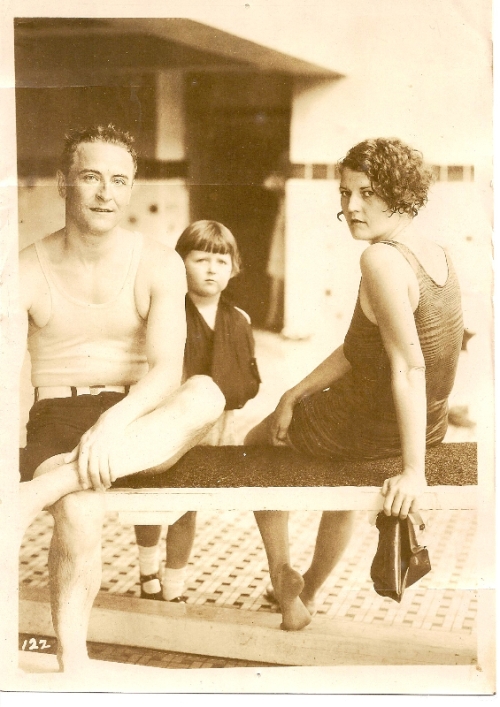











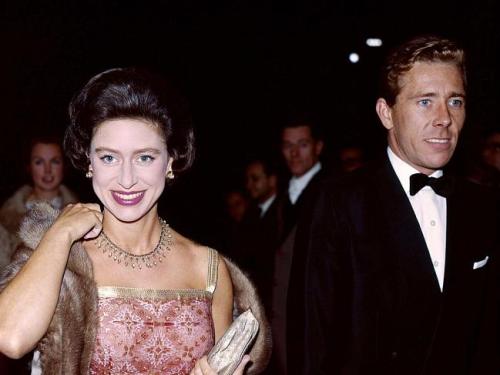





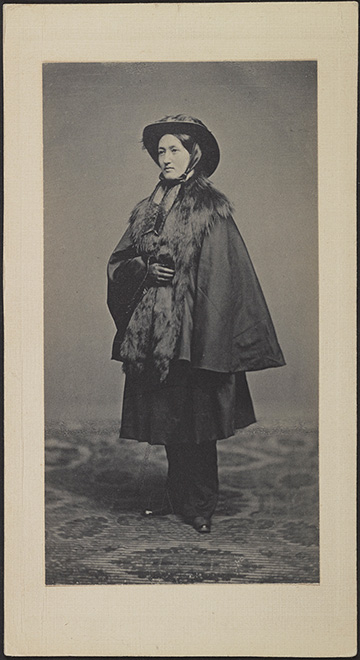

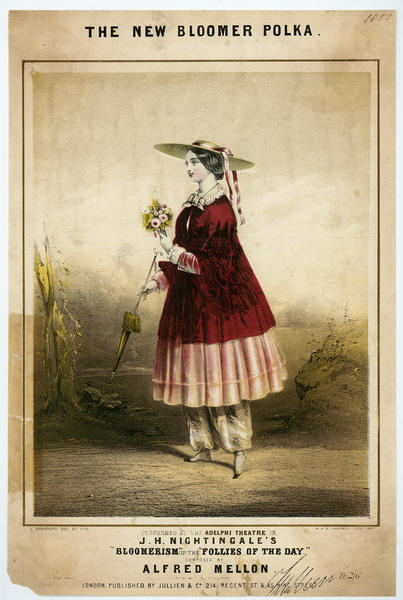


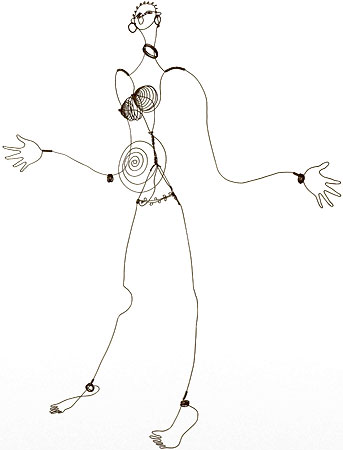
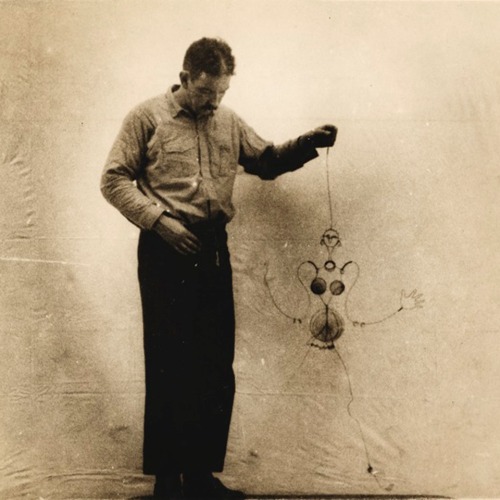

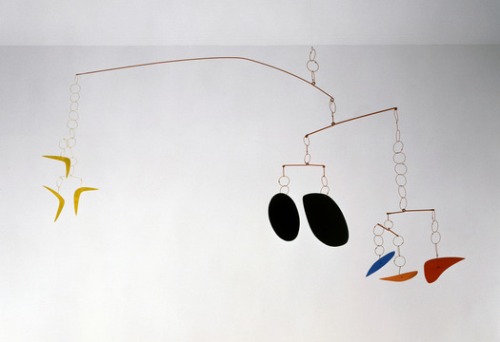
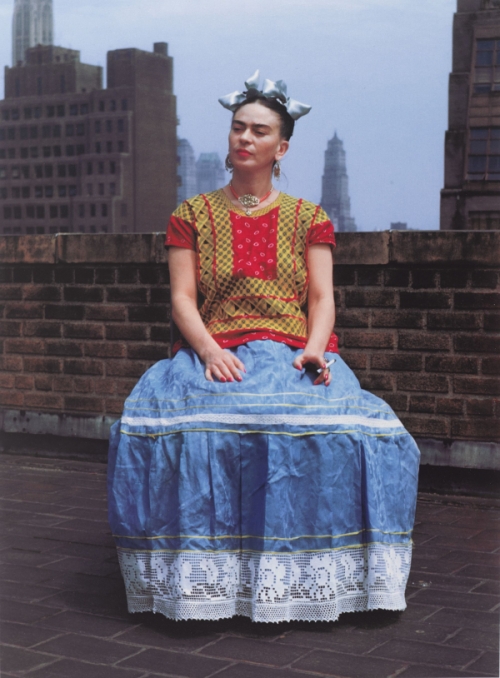

 In 1939, France declared war on Nazi Germany for its invasion of Poland. Within nine months, the Nazis invaded France. Baker was recruited by the Deuxiéme Bureau, the French Military Intelligence, as an “honorable correspondent.” She was so well-known and popular that even the Nazis were hesitant to cause her harm. She made the perfect spy. As an entertainer, she had good excuses for traveling, which allowed her to smuggle secret orders and maps written in invisible ink on her musical sheets. On some occasions, Baker would smuggle secret photos of German military installations out of enemy territory by pinning them to her underwear. To operatives in the French Resistance as well as U.S. and British agents, she relayed information on German troop movements she had gleaned from conversations she overheard between officials with whom she mingled following her performances or at embassy and ministry parties. She also exposed French officials working for the Germans. She hid Jewish refugees and weapons in her 24-room château in the South of France.
In 1939, France declared war on Nazi Germany for its invasion of Poland. Within nine months, the Nazis invaded France. Baker was recruited by the Deuxiéme Bureau, the French Military Intelligence, as an “honorable correspondent.” She was so well-known and popular that even the Nazis were hesitant to cause her harm. She made the perfect spy. As an entertainer, she had good excuses for traveling, which allowed her to smuggle secret orders and maps written in invisible ink on her musical sheets. On some occasions, Baker would smuggle secret photos of German military installations out of enemy territory by pinning them to her underwear. To operatives in the French Resistance as well as U.S. and British agents, she relayed information on German troop movements she had gleaned from conversations she overheard between officials with whom she mingled following her performances or at embassy and ministry parties. She also exposed French officials working for the Germans. She hid Jewish refugees and weapons in her 24-room château in the South of France.




